‘Wildfires at Night’: Stuart Palley’s photography captures a strange, sinister beauty
For “Terra Flamma: Wildfires at Night,” author Stuart Palley devoted five years to photographing California blazes. But when his book was to launch in December 2017, publication got held up because of the massive Thomas fire in Ventura and Santa Barbara counties, the largest wildfire in state history — at that time.
“Wildfires at Night” did finally get published by Schiffer, but not before the raging Camp fire — the new recordholder for California’s deadliest and most destructive — had broken out.
“Wildfires have always been on the periphery of my life,” said Palley, a 30-year-old photojournalist from Newport Beach, recalling a 1993 Laguna Canyon fire that consumed 16,000 acres when he was a boy, the smoke infiltrating football practice and high school dances.
The new book contains dozens of images taken from the Mexico border to the Shasta-Trinity National Forest in far Northern California. The 2013 Powerhouse fire in the Angeles National Forest was the first large blaze photographed by Palley, whose clients have included the L.A. Times as well as the Bureau of Land Management.
“Terra Flamma,” Latin for “earth on fire,” features long exposures taken between dusk and dawn. If you momentarily set aside the human and ecological toll and focus on the aesthetics of the fire, a captivating beauty emerges — by turns ethereal, haunting and almost supernatural.
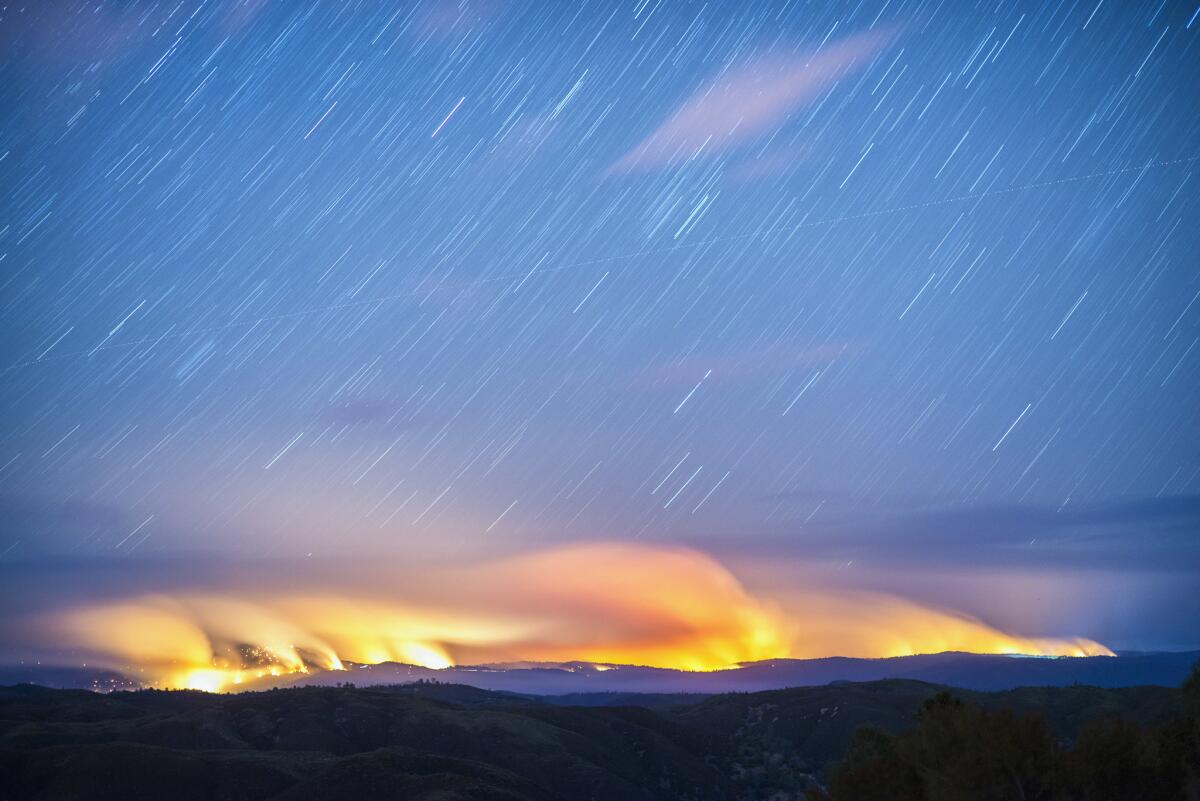
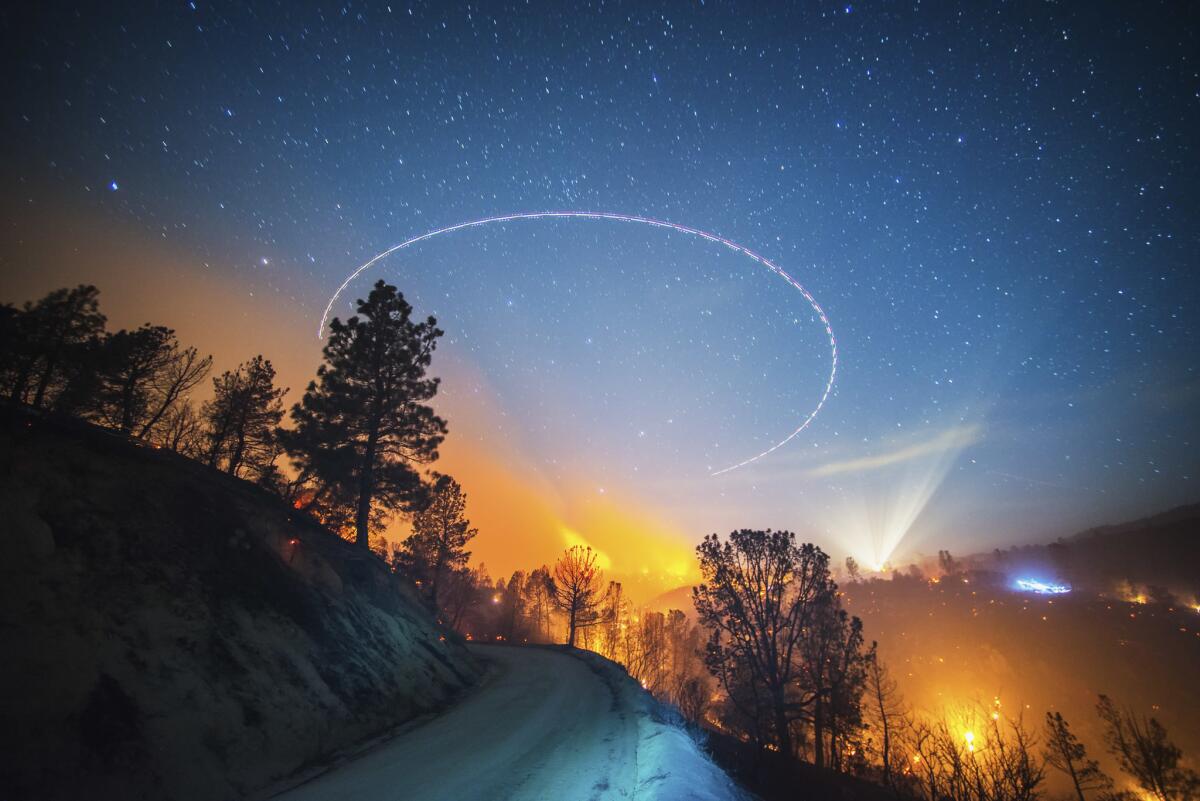
“Fire has its own light source, which creates this eerie, warm, orange glow,” Palley said, adding that he prefers a Van Gogh-like night sky and its fleeting color palette.
In the photographer’s image of the 2017 Atlas fire, an entire hillside east of Napa burns in the distance while an untouched verdant vineyard lies in the foreground, lighted by his headlights. A day later, Palley saw the destruction of the Tubbs fire near Santa Rosa — “hell on Earth,” he said, “like a photo from World War II of bombed-out European cities.”
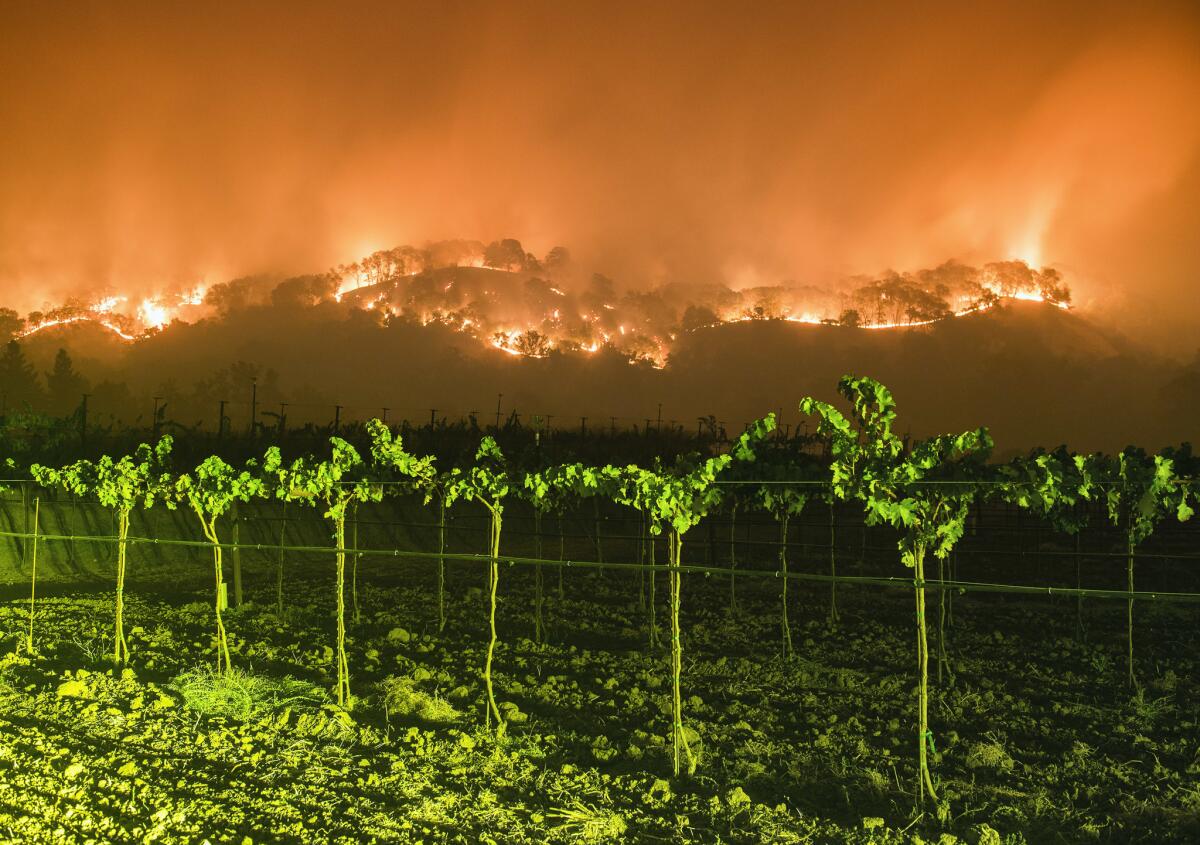
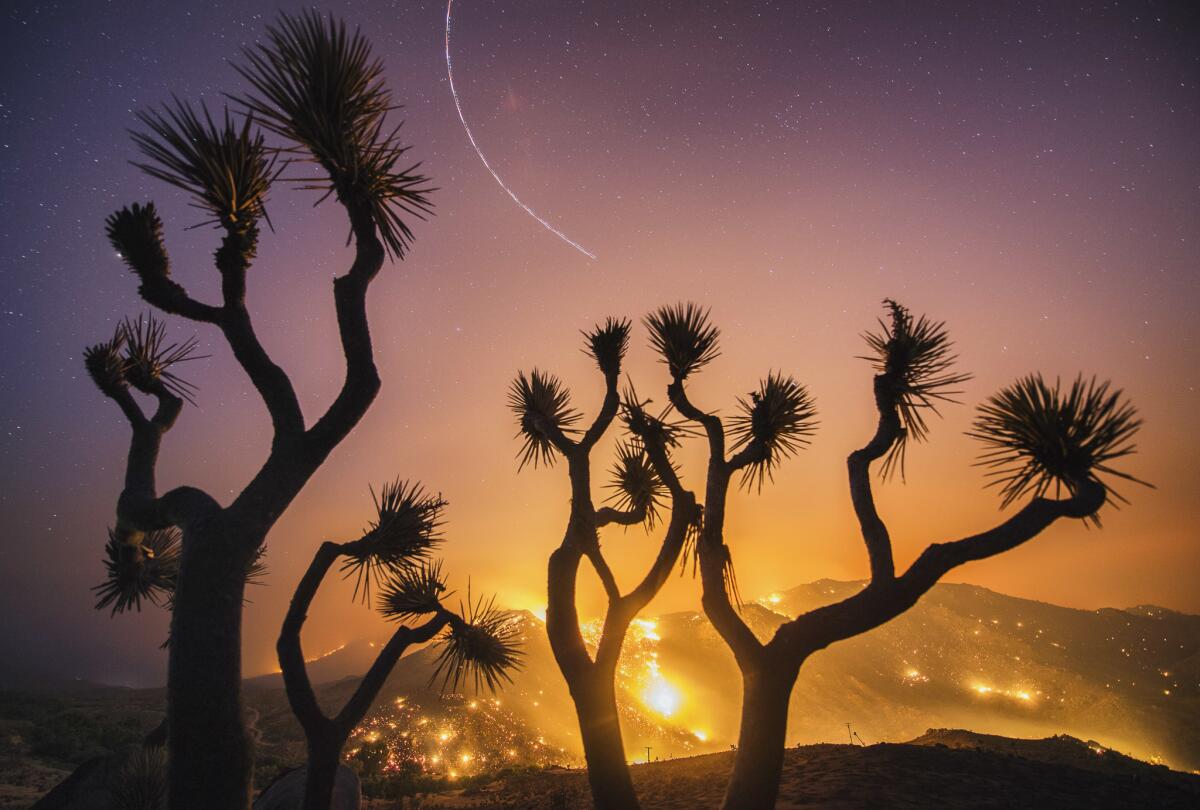
The nature of the subject means the images can seem at once real and unreal. Night, Palley said, can be more colorful than day.
"Everything is bathed in the closest light. The streetlights, sirens or the fire engine lights mix with the stars and sky. You have this fleeting imagery lasting a few hours or a night, then it’s gone."
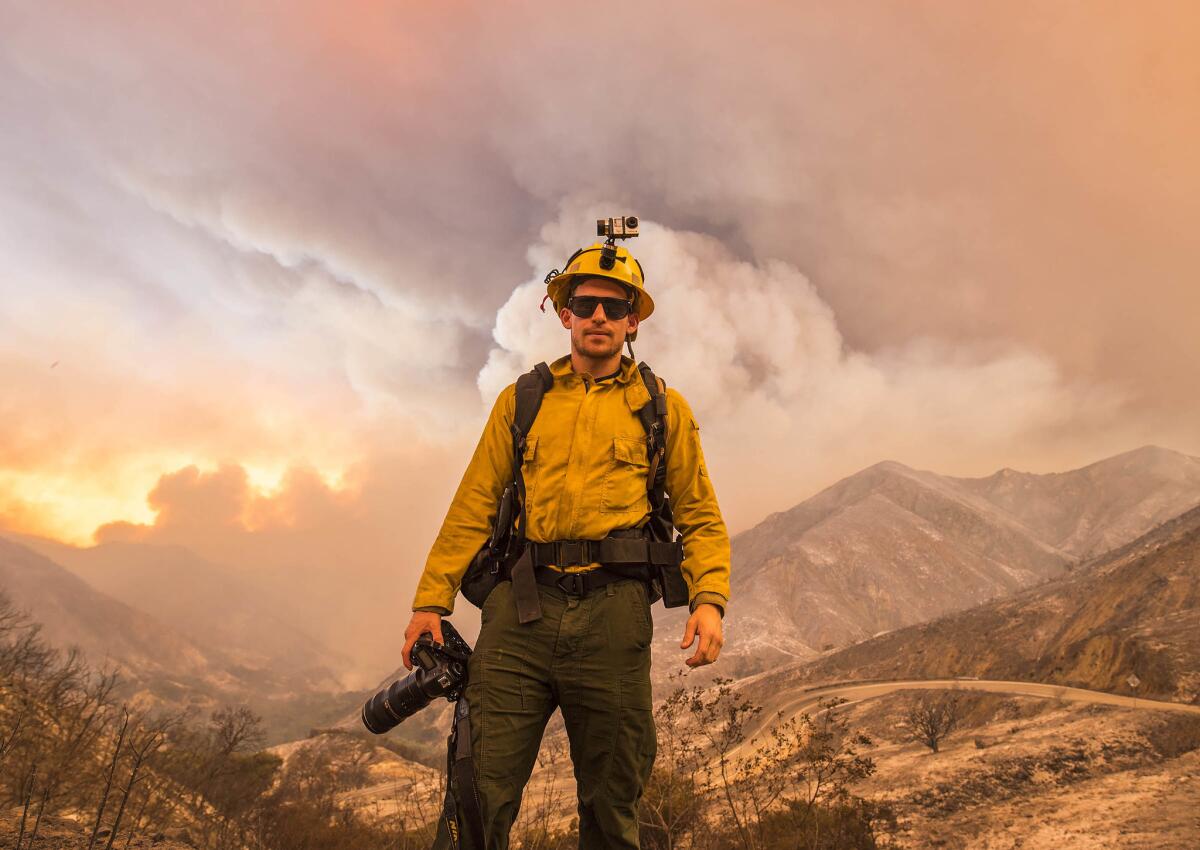
MORE ARTS:
See all of our latest arts news and reviews at latimes.com/arts.
The biggest entertainment stories
Get our big stories about Hollywood, film, television, music, arts, culture and more right in your inbox as soon as they publish.
You may occasionally receive promotional content from the Los Angeles Times.







